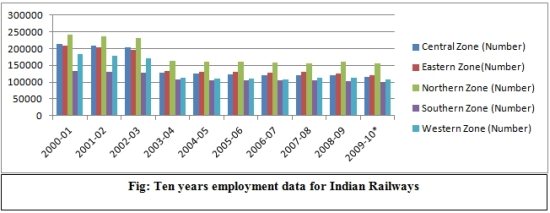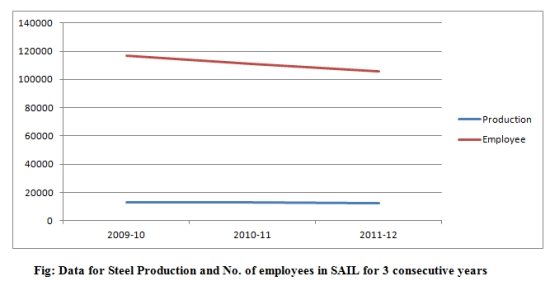- Articles ›
- Human Resources ›
- Emerging Technologies & The Impact On Employee Relations Articles
Emerging Technologies & The Impact On Employee Relations
Employee relations consist of all those areas of human resource management that involve relationships with employees – directly and/or through collective agreements where trade unions are recognized. Employee relations are generally concerned with managing the employment relationship. They will not necessarily be subject to collective agreements or joint regulation. Employee relations, therefore, cover a broader spectrum of the employment relationship than industrial relations, which are usually regarded as being essentially about dealings between managements and trade unions. This wider definition recognizes the move away from collectivism towards individualism in the ways in which employers relate to their employees.
Technological improvement and its impact on the work force have become a focus of attention world over. These modern technologies have the potential to increase productivity, help managers in strategic decision making, cultivate mobile work culture, make effective use of human resource, employee empowerment etc. There are, however, conflicting views about the implications of changing technology for employment. Some experts say that the pace of technological change is accelerating and that thousands of workers in plants and offices are affected as labour saving innovations are diffused more widely. Concern about changing technology has been continual over our history-usually increasing during periods of higher-than-average unemployment, and abating somewhat when the economy and employment are expanding.

Image Courtesy: cooldesign, freedigitalphotos.net
Computerized human resource information systems
A computerized human resource information system consists of ‘a fully integrated, organization-wide web of HR-related data info, services, databases, tools and transactions’. Such a system can be described as ‘e-HR’, meaning ‘the application of conventional network and voice technologies to enhance HR administration, transactions and process performance’. The reasons for adopting e-HR are:
●HR service improvement;
●Achieve operational effectiveness and reduce costs;
●The craving need of the HR function to change the nature of its relationship with employees and line managers;
●The revolution of HR into a customer-focused and responsive function;
●The offered services that fit the new world of work and are attractive to current and future staff.
The HR strategy of an organization in relation to HR information is concerned first with the use of computerized information for strategic decision making, second with the range of applications which should be included in the system and finally with the provision to line managers of the facility to have direct access to any personnel data they need to manage employee relations in their own teams in a devolved organization. Specifically the information may focus on areas such as:
● Organization development – how the structure may need to adapt to future needs and how IT can enable structural change, for example, high performance team structures
● Human resource plans, especially those concerned with ‘mapping’ future competence requirements and enlarging the skills base
● Determination of future development and training needs
● Determination of the performance and personality characteristics of the people who will be successful in the organization
● Assessment of the ‘health’ of the organization measured by attitude surveys and turnover and absence statistics, leading to the development of motivation, retention and absence control strategies
● Analysis of productivity levels as the basis for productivity improvement programmes
As established by various studies, in many respects the core functionality in use is concerned with administrative processes, particularly absence management (very popular), training and development, reward, payroll and recruitment and selection. Most HR functions use their HRM information system to change pay rates, alter employee records, monitor absence figures and download forms for manual completion. Not many organizations use their IT systems strategically for workforce planning, tracking the skills of individuals and making the data available for analysis and action.. The main potential applications of an HRIS are:
- Personal records
- Business to employees (B2E)
- Human resource planning
- Employee turnover monitoring
- Employee scheduling
- Employee profiling
- Skills inventories and audits
- competency modelling
- Recruitment
- Reward management
- Performance management
- Career management
- Absence control
- Equal opportunity monitoring
- Expert systems
Mobile Work Lifestyle
For many, work is no longer something we do at a certain place or at a certain time; work can be done anywhere and anytime. A 2010 study found that more frequent use of information and communication technology (ICT) results in being more efficient at work, but also generates increase in work load and the pace the work demands. In a subsequent study, 83% of workers indicated that ICT increases productivity, but 53% describe greater stress levels. Some organizations are "attempting to flip the off switch" with forced restrictions from ICT and its 24 X 7 connections. Volkswagen, in Germany plans to deactivate emails during non-working hours. Deutsche assured to not expect workers to read email after business hours at certain points during the week.
Employee Empowerment
The notion of employee empowerment is becoming increasingly important within the management literature. We argue that as empowerment is an organizational choice, emerging technologies cannot be said to “empower” employees. They should actually be seen as a support tool which can facilitate empowerment depending upon the larger organizational context and more specifically on the four main organizational variables; people, culture, structure and tasks & procedures. The state that these variables take in different organizations mediate the role of ITs and ultimately determine whether they will facilitate or inhibit empowerment.
Employees are believed to be able to contribute creatively to the solution of organizational problems and not only to accept but to seek responsibility of overcoming these. These principles lead to a democratic and open organizational culture, in which employees are given the freedom to decide and act, and the managers learn to restrain from their “ruling” roles. ITs can keep employees totally informed of the company’s performance results (sales, profits) and competitors’ performance, the company’s vision and goals and more delicate issues such as sell-off options and possibilities of down-sizing.
Employee Being Watched
Throughout the industrialized countries, private and public sector employers are purchasing and implementing new advanced technologies that enhance the monitoring of security and productivity while substantially increasing the level of intrusion into employee privacy. As noted, employers often blindly adopt technological software capabilities without considering their adverse impacts. However, contemporary technologies expand employment transparency beyond the workplace, thereby enabling employers to monitor employees even while not at work and propelling their reach into an employee’s private life. Certain modern technologies, such as DNA testing, biometrics, and microchip implants, even penetrate employees’ bodies. Furthermore, unlike other forms of employment surveillance technologies, newer computer-based technologies automatically accumulate and store information without human judgment or discretion. Without substantive limitations on their use, these technologies can create a sizeable imbalance between employer surveillance and the reasonable expectations of employees that they will not be subject to perpetual real-time monitoring. Such a disparity may lead to employee demoralization along with a possible resurgence in employee activism.
Technology Affecting Jobs?
Assessing the impact of technology is very complex. Technological changes interact with, and are affected by, changes in output, consumption patterns, international competition, and other factors, and the relationship between changing technology and employment is by no means clear. To explore the impact of these emerging technologies on productivity, employment, job skills, and labour-management relations, a comprehensive data for employment in Indian Railways for 10 consecutive years has been shown graphically

Industries that lead in the adoption of new technology generally are among those with above-average rates of productivity growth. Although the specific contribution of an innovation to productivity growth cannot be isolated from other factors and measured precisely, technology is widely regarded as a major source of productivity gains, with a reduction in unit labor requirements frequently associated with the introduction of robots, CAD/CAM, and other advanced innovations.
|
Sectors |
Employment across various sectors 2004-05 |
Employment across various sectors 2009-10 |
Absolute increase in employment (in millions) 2004-05 to 2009-10 |
|
Agriculture |
258.93 |
244.85 |
-14.08 |
|
Manufacturing |
55.77 |
50.74 |
-5.03 |
|
Electricity, gas and water supply |
1.3 |
1.25 |
-0.05 |
|
Services |
112.81 |
116.34 |
3.53 |
|
Other Services |
13.51 |
12.24 |
-1.27 |
Fig: Employment data across various sectors in 2004-05 and 2009-10

Fig: Data for Steel Production and No. of employees in SAIL for 3 consecutive years
Moreover, the content of jobs is being modified by technological change. Although job titles frequently remain the same while innovation is taking place, over the time, employers have lesser demand for manual dexterity, physical strength for materials handling, and for traditional craftsmanship. On the factory floor, manual tasks are being eliminated by computer-process control, advanced materials-handling equipment, and other innovations, with workers increasingly becoming monitors of highly mechanized production lines (data for SAIL shown above).
Technological advancements include a vast array of electronic information and communications, computer-aided document creation and storage, managing conflicts, virtual learning & video conferencing sessions and other endless futuristic developments has allowed for greater efficiency and organization in one’s everyday work life. Unsurprisingly, such advances have also invaded the employment sector with both positive and negative consequences on the employer employee relationship.
This article has been authored by Harshpreet Singh & Shubham Jain from XIMB
References
http://data.gov.in/dataset/employment-across-various-sectors-millions-1999-2000-2004-05-2009-10-usual-principal-subsidi
http://data.gov.in/dataset/factory-employment
http://data.gov.in/dataset/employment-railways
https://malegislature.gov/Laws/GeneralLaws/PartIII/TitleI/Chapter214/Section1B
http://www.morganbrown.com/docs/privacy-technology%2011-2010.pdf
http://citeseerx.ist.psu.edu/viewdoc/download?doi=10.1.1.103.6492&rep=rep1&type=pdf
http://ekkehard.ernst.free.fr/files/Bibliography/technologicalregimes/Bassanini_Ernst_02.pdf
http://digitalcommons.ilr.cornell.edu/cgi/viewcontent.cgi?article=1436&context=key_workplace
http://www.technologyreview.com/featuredstory/515926/how-technology-is-destroying-jobs/
http://www.sail.co.in/pdf/SAIL%20SDPR%202011-12_low%20res.pdf
http://en.wikipedia.org/wiki/Emerging_technologies
http://www.ilo.org/public/english/dialogue/actemp/downloads/publications/dmirglob.pdf
http://www.academia.edu/268226/Emerging_Technologies_ICTs_and_Our_Businesses
Views expressed in the article are personal. The articles are for educational & academic purpose only, and have been uploaded by the MBA Skool Team.
If you are interested in writing articles for us, Submit Here
Share this Page on:
What is MBA Skool?About Us
MBA Skool is a Knowledge Resource for Management Students, Aspirants & Professionals.
Business Courses
Quizzes & Skills
Quizzes test your expertise in business and Skill tests evaluate your management traits
All Business Sections
Write for Us